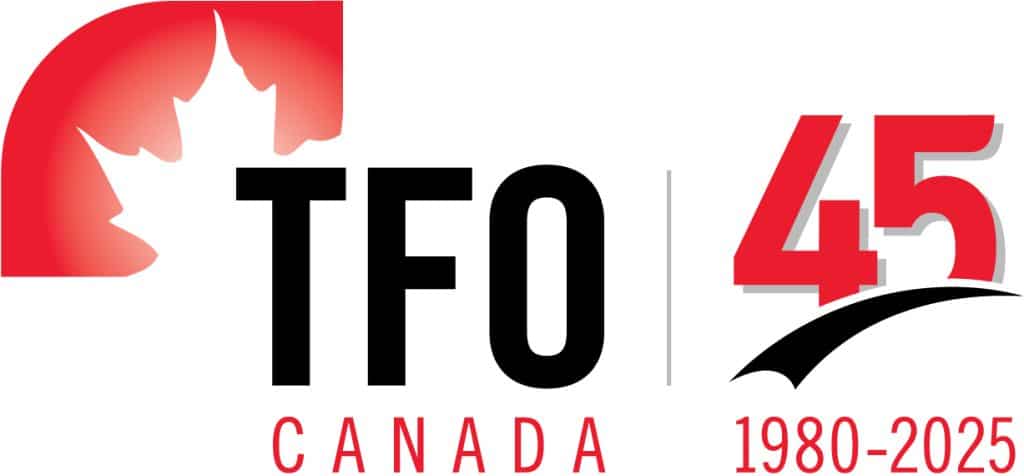Research Methods
As mentioned, it is important to consider market research not as a one-off effort, but as an ongoing study. Market research is all about gathering information and transforming it into a useful tool to improve your export efforts. At the outset of your market research you should set out some objectives for your research and identify which method of research you will use to collect, analyze and interpret information.
Broadly speaking there are two types of market research: Primary and Secondary research, both of which contain a mix of cost and cost-free sources of information.
Primary Research
This form of research derives information directly from sources in the target market. Information is obtained via interviews, questionnaires and other information-gathering techniques conducted directly with contacts in the target market. Such contacts may include:
Potential partner/ or trade representative – send samples to them for feedback;
Trade associations, Chambers of commerce;
Foreign trade missions (Missions of your own country abroad);
International trade shows;
Companies already in the market (non-competitive);
Local embassies and high commissions (especially with trade offices);
Trade shows and missions in your own country attended by foreign companies;
Private research firms.
Secondary Research
This is research conducted by gathering information from a third party. There are many sources of information available, and it is up to you to carefully identify which sources are most readily available, most accurate and most effective for your purposes. Here are some examples of valuable secondary sources of information:
The Internet
The internet is probably the single most efficient tool for conducting market research. It is certainly the most cost-effective. However, like non-Internet sources, there is a wide variance in reliability of data. Always confirm and double-check with secondary sources.
Numerous useful resource links are provided at the “Links in Canada” and “Links in your country” sections of this website. In general, you should be looking for websites that cover areas such as:


Government Statistical Databases:
For Canada – Statistics Canada – www.statcan.ca
For International Statistics by country
www.un.org (United Nations), www.cia.gov (CIA World Factbook), www.oecd.org (OECD – Organization of Economic Co-operation and Development Member countries), www.nationmaster.com, World Bank Data (www.worldbank.org)
International Demographic Statistics (Searchable by Item e.g. “Population by marital status”) www.census.gov/ /World Marriage Data | Population Division (un.org)
International Market Data – www.intracen.org (International Trade Centre – Geneva)
Purchasable reports – www.snapdata.com
Tender feeding systems
A Canadian example is MERX : Find New Contracts, Bids & Tenders for Canadian Businesses
Trade Promotion Organizations
Public or private – find at https://intracen.org/business-support-organizations
A Canadian example is tradecommissioner.ca – although designed for Canadians, the information is useful to any exporter.


Civic/Regional Economic Development and Investment Attraction Agencies
A good civic example in Canada is www.montrealinternational.ca; at the regional/provincial level http://www.investquebec.com/en/index.aspx?
Online event websites:
International example – www.tsnn.com
Vertical/horizontal portals. Some examples of main Canadian information-portals
www.canadainternational.gc.ca
A portal to all kinds of useful information about Selling to Canada, Trade Agreements, Import Controls, Much more… (note – in fact most of the other sites we are discussing have links on this site).
www.strategis.gc.ca
Industry Canada’s Site provides: Importer Listings, Manufacturer Listings, Trade Statistics.
www.cbsa-asfc.gc.ca
Canada Border Services Agency: All customs issues including tariff, quota etc.


Association and Chambers of Commerce websites
www.worldchambers.com
World Chambers Network (Click on “Chamber Directory” at top to Search)
www.micromedia.ca
Associations Canada Directory (an example of a good source of Association contacts)
Major newspaper and trade journal online archives
World Association of Newspapers
Trade Promotion Organizations
There are many Trade Promotion and related organizations throughout the world offering you free informational services on-line or by other means. As mentioned, you can find listing of international Trade Promotion Organizations (TPOs) at https://intracen.org/business-support-organizations. The first organization for you to look at might be your own Trade Promotion Organization(s) whether part of your Ministry of Foreign Trade or private. TPO’s of the target market might also be useful, even if they are export-related.


There is of course, the rarer type of TPO – the import promotion organization. Along with CBI.org (The Centre for the Promotion of Imports from Developing Countries in the Netherlands) and a handful of others, TFOC is a distinct and valuable resource of market research specifically targeted to the exporter from the developing and transition economy countries. Be sure to explore the various Market Information Papers we have on-line as well as the other content that we offer in other sections of this website.
Note: If you are an exporter with at least one year’s exporter experience (and, ideally, have all elements of your Export Plan in place) you may wish to fully register with TFOC (Step 2, and 3 if applicable) in order to have your export offer for published. Your company and products will be promoted directly to Canadian importers via our Import Info e-newsletter and on-line to any interested party at our searchable database. This service may lead not only to potential sales but also back to the primary source of market research information: direct feedback from contacts in the marketplace for the further development of your products and foreign market strategy.
Trade Offices of Embassies, High Commissions and Consulates
It is important to keep in mind that such offices are in place in large part for the purpose of assisting exporters in their effort. So don’t be shy to get them working for you! The Trade Offices of your country’s Missions in the target market usually maintain current and up-to-date market information because they are on the ground in the very market of interest. Utilize them to gain timely insider market intelligence and advice. Find out more from them regarding key issues such as (among other things previously mentioned):
Market Prospecting
Key contacts search
Visit information
Face-to-face briefing
Local company information


Other
The following are also good resources for conducting your market research:
Freight Forwarders (domestic and foreign)
Commercial Banks and other financial institutions involved in international trade
Trading Houses, Brokers and Agents
Final Analysis: Market Research Feeds into the Marketing Plan
Now that you have chosen your target market and have gathered and analyzed information specific to it, you need to proceed to the next step in developing your Foreign Market Strategy – the Marketing Plan. In effect, the market research allows you to fill in the Marketing Plan in an informed manner; all the market knowledge you have accumulated enables you to proceed to further develop your strategy, including such important issues as:
Executive Summary
Product/service analysis, core competency
Market analysis – key data, trends
Competitive analysis – positioning
Goals/Objectives – quantitative
Strategy – pricing, delivery
Implementation – dates, budget
Evaluation – goals being met
Research Methods
As mentioned, it is important to consider market research not as a one-off effort, but as an ongoing study. Market research is all about gathering information and transforming it into a useful tool to improve your export efforts. At the outset of your market research you should set out some objectives for your research and identify which method of research you will use to collect, analyze and interpret information.
Broadly speaking there are two types of market research: Primary and Secondary research, both of which contain a mix of cost and cost-free sources of information.
Primary Research
This form of research derives information directly from sources in the target market. Information is obtained via interviews, questionnaires and other information-gathering techniques conducted directly with contacts in the target market. Such contacts may include:
Potential partner/ or trade representative – send samples to them for feedback;
Trade associations, Chambers of commerce;
Foreign trade missions (Missions of your own country abroad);
International trade shows;
Companies already in the market (non-competitive);
Local embassies and high commissions (especially with trade offices);
Trade shows and missions in your own country attended by foreign companies;
Private research firms.
Secondary Research
This is research conducted by gathering information from a third party. There are many sources of information available, and it is up to you to carefully identify which sources are most readily available, most accurate and most effective for your purposes. Here are some examples of valuable secondary sources of information:
The Internet
The internet is probably the single most efficient tool for conducting market research. It is certainly the most cost-effective. However, like non-Internet sources, there is a wide variance in reliability of data. Always confirm and double-check with secondary sources.
Numerous useful resource links are provided at the “Links in Canada” and “Links in your country” sections of this website. In general, you should be looking for websites that cover areas such as:


Government Statistical Databases:
For Canada – Statistics Canada – www.statcan.ca
For International Statistics by country
www.un.org (United Nations), www.cia.gov (CIA World Factbook), www.oecd.org (OECD – Organization of Economic Co-operation and Development Member countries), www.nationmaster.com, World Bank Data (www.worldbank.org)
International Demographic Statistics (Searchable by Item e.g. “Population by marital status”) ww.census.gov// /ww.census.gov/
International Market Data – www.intracen.org (International Trade Centre – Geneva)
Purchasable reports – www.snapdata.com
The Internet
A Canadian example is MERX : Find New Contracts, Bids & Tenders for Canadian Businesses
The Internet
Public or private – find at https://intracen.org/business-support-organizations
A Canadian example is tradecommissioner.ca – although designed for Canadians, the information is useful to any exporter.


Civic/Regional Economic Development and Investment Attraction Agencies
A good civic example in Canada is www.montrealinternational.ca; at the regional/provincial level http://www.investquebec.com/en/index.aspx?
Online event websites:
International example – www.tsnn.com
Vertical/horizontal portals. Some examples of main Canadian information-portals
www.canadainternational.gc.ca
A portal to all kinds of useful information about Selling to Canada, Trade Agreements, Import Controls, Much more… (note – in fact most of the other sites we are discussing have links on this site).
www.strategis.gc.ca
Industry Canada’s Site provides: Importer Listings, Manufacturer Listings, Trade Statistics.
www.cbsa-asfc.gc.ca
Canada Border Services Agency: All customs issues including tariff, quota etc.


Association and Chambers of Commerce websites
www.worldchambers.com
World Chambers Network (Click on “Chamber Directory” at top to Search)
www.micromedia.ca
Associations Canada Directory (an example of a good source of Association contacts)
Major newspaper and trade journal online archives
www.wan-press.org
World Association of Newspapers
Trade Promotion Organizations
There are many Trade Promotion and related organizations throughout the world offering you free informational services on-line or by other means. As mentioned, you can find listing of international Trade Promotion Organizations (TPOs) at https://intracen.org/business-support-organizations. The first organization for you to look at might be your own Trade Promotion Organization(s) whether part of your Ministry of Foreign Trade or private. TPO’s of the target market might also be useful, even if they are export-related.


There is of course, the rarer type of TPO – the import promotion organization. Along with CBI.org (The Centre for the Promotion of Imports from Developing Countries in the Netherlands) and a handful of others, TFOC is a distinct and valuable resource of market research specifically targeted to the exporter from the developing and transition economy countries. Be sure to explore the various Market Information Papers we have on-line as well as the other content that we offer in other sections of this website.
Note: If you are an exporter with at least one year’s exporter experience (and, ideally, have all elements of your Export Plan in place) you may wish to fully register with TFOC (Step 2, and 3 if applicable) in order to have your export offer for published. Your company and products will be promoted directly to Canadian importers via our Import Info e-newsletter and on-line to any interested party at our searchable database. This service may lead not only to potential sales but also back to the primary source of market research information: direct feedback from contacts in the marketplace for the further development of your products and foreign market strategy.
Trade Offices of Embassies, High Commissions and Consulates
It is important to keep in mind that such offices are in place in large part for the purpose of assisting exporters in their effort. So don’t be shy to get them working for you! The Trade Offices of your country’s Missions in the target market usually maintain current and up-to-date market information because they are on the ground in the very market of interest. Utilize them to gain timely insider market intelligence and advice. Find out more from them regarding key issues such as (among other things previously mentioned):
Market Prospecting
Key contacts search
Visit information
Face-to-face briefing
Local company information


Final Analysis: Market Research Feeds into the Marketing Plan
Now that you have chosen your target market and have gathered and analyzed information specific to it, you need to proceed to the next step in developing your Foreign Market Strategy – the Marketing Plan. In effect, the market research allows you to fill in the Marketing Plan in an informed manner; all the market knowledge you have accumulated enables you to proceed to further develop your strategy, including such important issues as:
Executive Summary
Product/service analysis, core competency
Market analysis – key data, trends
Competitive analysis – positioning
Goals/Objectives – quantitative
Strategy – pricing, delivery
Implementation – dates, budget
Evaluation – goals being met

